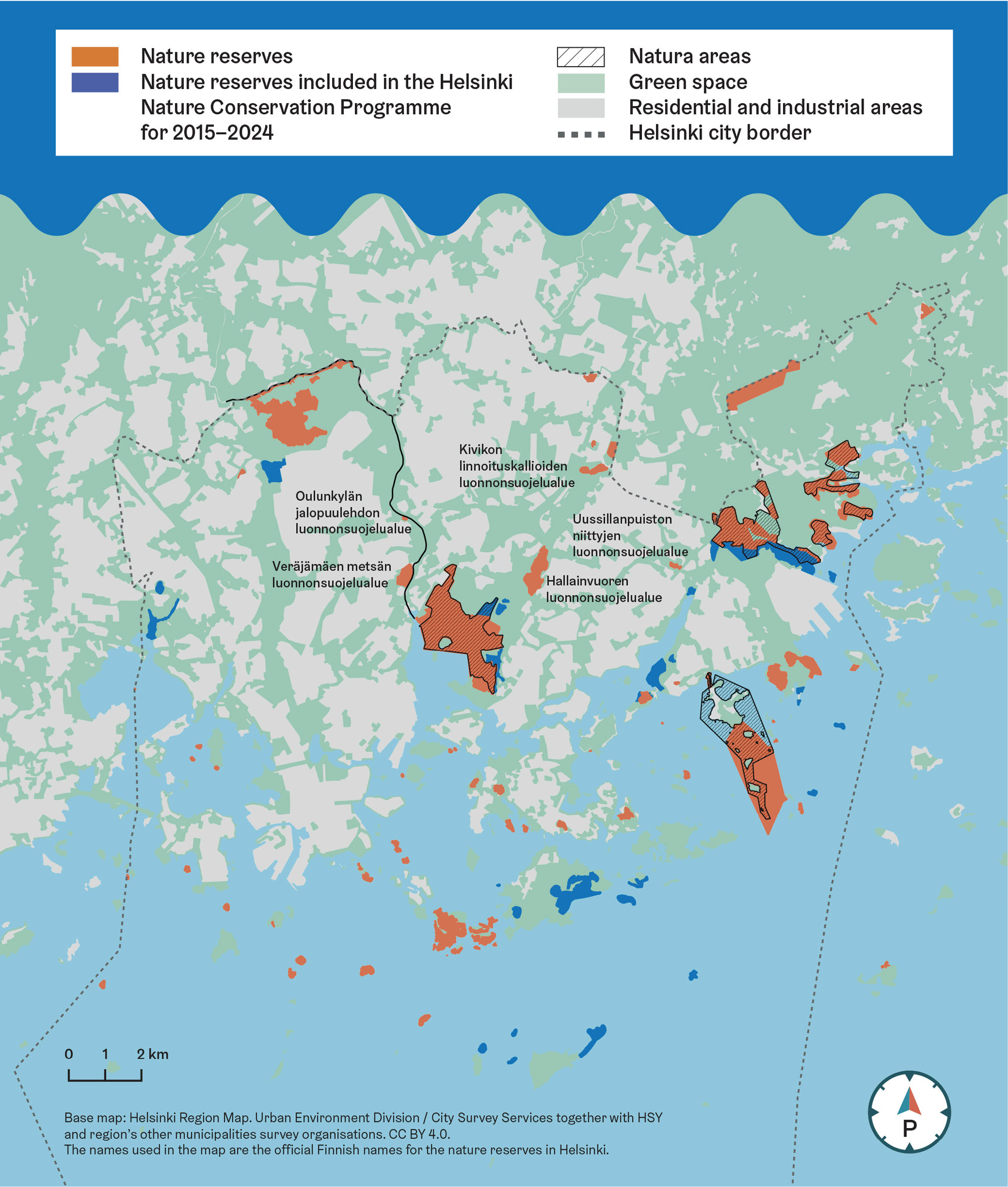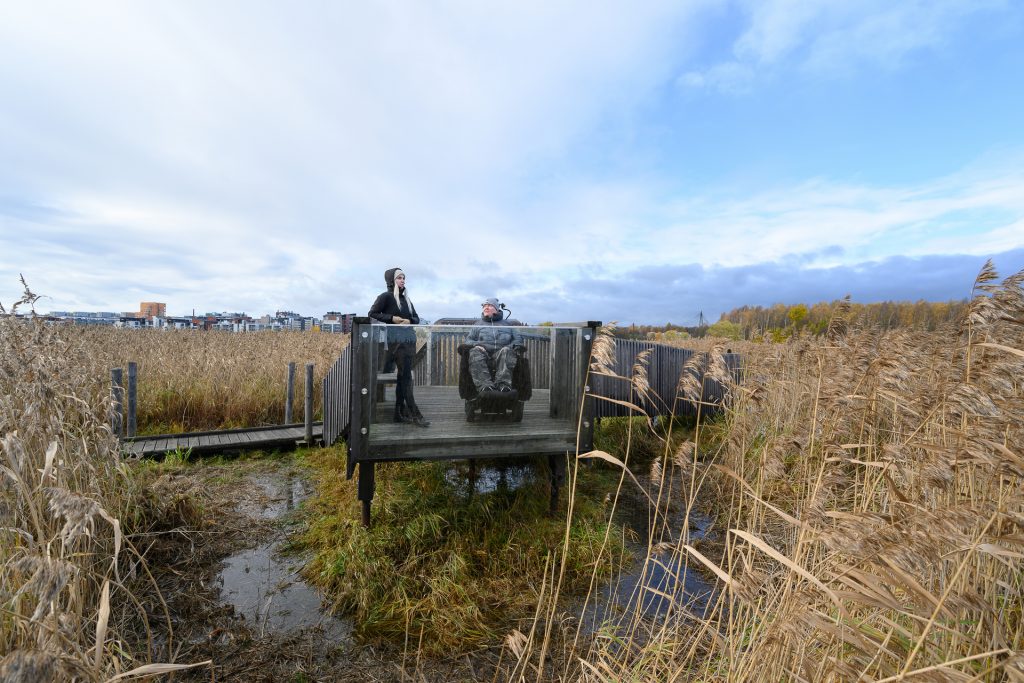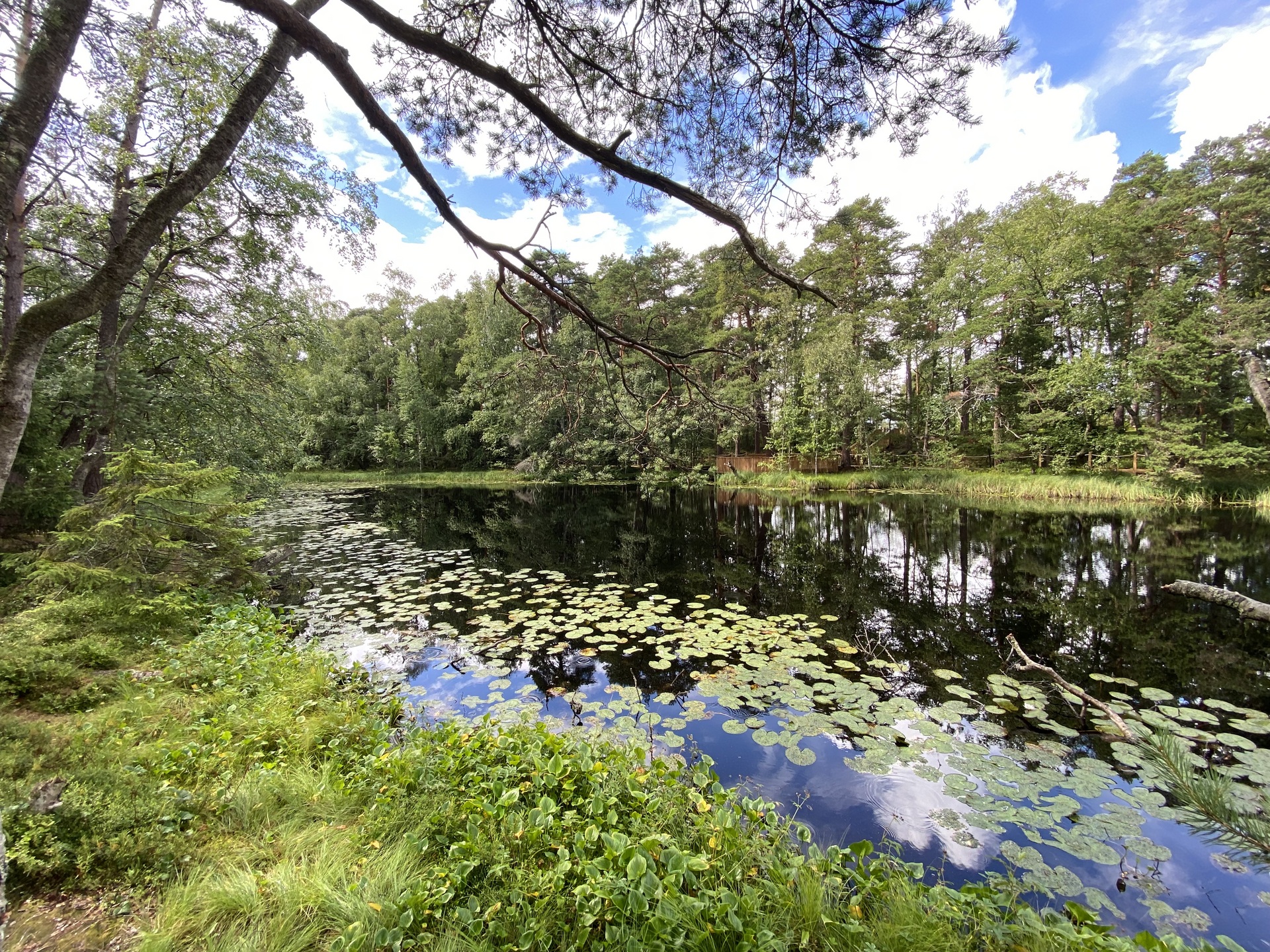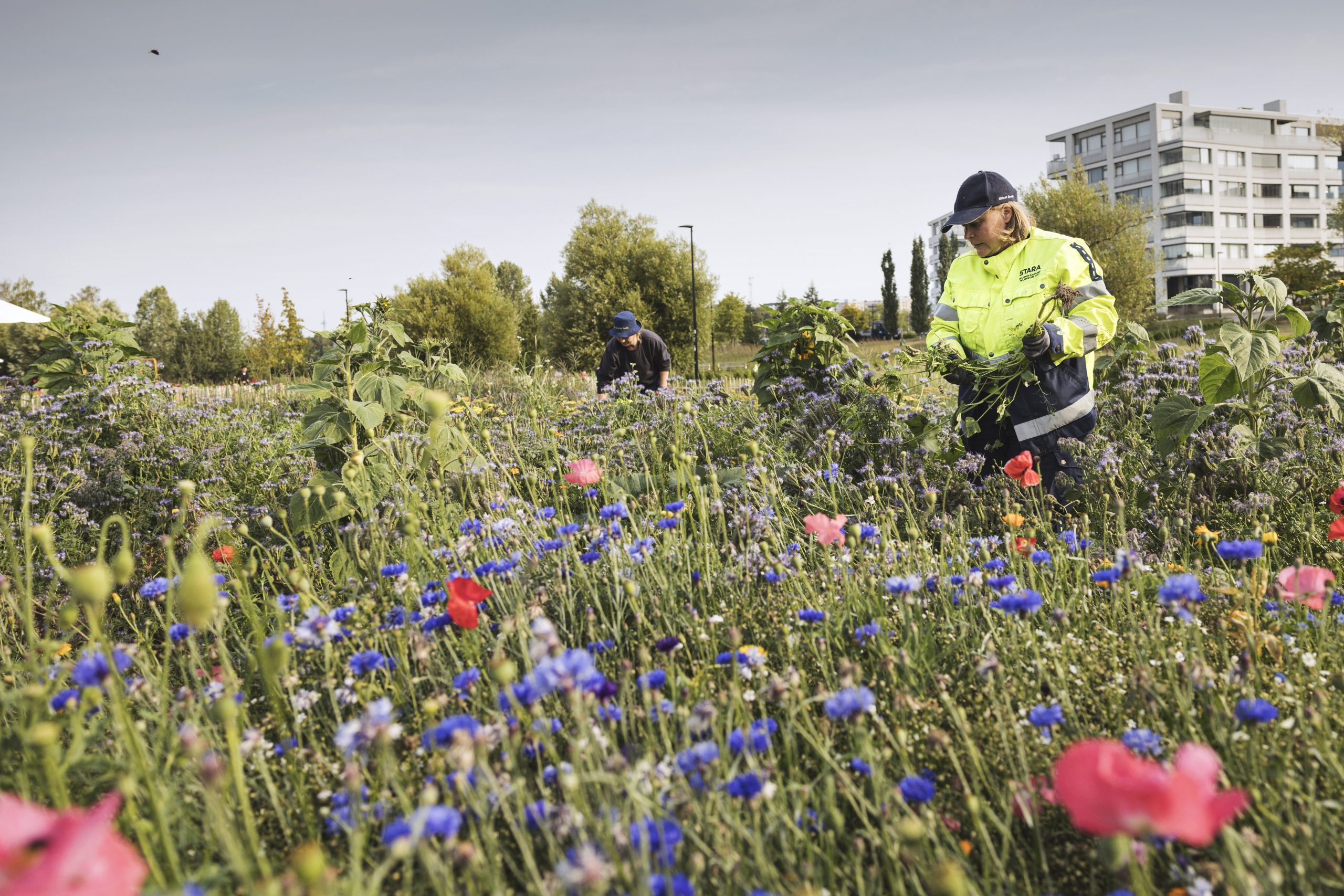Helsinki is a green seaside city, with green spaces covering more than a third of the land area and the sea covering two thirds of the total city area. By international standards, the amount of green space is good, but green spaces are fragmented due to wide traffic routes. Helsinki’s diverse nature consists of forests, meadows, rocky outcrops, wetlands, beaches, islands, streams and parks. In Helsinki, around 42% of the land area is wooded and around 35% is forested. Indeed, Helsinki’s urban nature is diverse, ranging from near-natural to heavily modified by humans. Particularly in forests and on the shores, there are still some quite natural habitats, such as spectacular cliffs. Human influence, on the other hand, has contributed to species diversity in parks, yards and gardens, as well as in meadows, fields and street greenery.
The city is growing and developing rapidly, which brings challenges. Construction and climate change are the main threats to biodiversity. It is therefore significant that in spring 2024, the City Board decided on medium- and long-term targets for environmental protection in Helsinki, which are also ambitious in terms of biodiversity protection: the City aims to halt biodiversity loss in Helsinki by 2030.
An important part of biodiversity protection is the establishment of strict nature reserves. Helsinki’s goal is that by 2040, one tenth of the city’s land and sea area will be protected. This has progressed in line with the City Strategy, with the City proposing the creation of five new nature reserves each year. At the end of 2023, nature reserves accounted for 4.4% of the land area and 1% of the water area. The most typical conservation criteria are birdlife, forests, mires, meadows, geology and endangered plants. In 2023, the City started preparing its fourth consecutive nature reserve programme. The programme will run from 2025 to 2040. The nature reserve programme will determine the sites to be established as nature reserves under the Nature Conservation Act.
Helsinki’s nature reserves

Promotion of diversity in Helsinki
The City of Helsinki Biodiversity Action Plan 2021–2028, implemented during the strategy period, seeks to integrate the consideration of biodiversity into all of the City’s activities. At the end of 2023, 79% of the 92 measures in the programme were on track.
In 2024, Helsinki updated the principles guiding the management plans and management of its forests. The City will continue to systematically promote forest biodiversity, and an increasing proportion of forest areas will be left to age naturally. In its forest management, the City is also preparing for the effects of climate change, the growing population and the densifying urban structure. The next steps will be to update the guidelines for the management of meadows and open spaces and the work instructions for nature management. The blue network survey was completed in 2023 to build up a repository of information on the city’s ecological networks. This will be followed by a combined review of ecological networks, which will further determine the effectiveness of strengthening these networks.
The consideration of nature values and the development of ecological and recreational networks are part of land use and public area planning. A green factor was introduced into Helsinki’s building regulations in 2023 to ensure that plots have a sufficient share of green surface area, thereby helping prevent stormwater floods. Biodiversity can be further enhanced through regulations on green roofs and green walls. Furthermore, the City published the ‘Sallitusti villi’ biodiversity guide in 2024. The main aim of the guide is to help prevent biodiversity loss in the city and preserve and enrich biodiversity in the built environment. The guide focuses on the design of urban greenery in public areas in Helsinki, but it can also be applied to other cities and municipalities, and private yards.
Dozens of lawns not in active use have been converted into meadows by changing the way they are managed. In addition to this, OmaStadi participatory budgeting projects have created new meadows in places such as Töölönlahdenpuisto, Savelanpuisto, Kurranummi, the southern slope of Alppikylänhuippu and Nummisuutarinpuisto.
The City has started to prepare its first nature services development plan, which will be completed in 2025. The plan will help develop recreational services in a way that ensures equitable recreational opportunities for all residents and prevents the deterioration of nature in the most sensitive areas.
Nature monitoring
To obtain more comprehensive information on nature, the City is implementing the nature monitoring plan completed in 2022. In 2023, Helsinki surveyed its polypore species. Of the 260 or so species of dwarf hunter in Finland, as many as 200 have been found in Helsinki, reflecting the exceptionally high diversity of Helsinki’s forests and the large number of forests that are in a natural state or in the process of being restored to their natural state.
A mammal survey was also carried out in 2023. The City collected residents’ sightings of six mammal species. The sightings of foxes, badgers, squirrels, rats, hedgehogs and raccoon dogs showed that mammals are abundant in Helsinki. City residents actively reported their mammal sightings via the dedicated online service.
Nature information management and use
The Urban Environment Division has identified the need to develop both the production and use of nature assessments throughout the whole chain, from planning to the implementation of contracts, projects and maintenance. During 2024, the division carried out a comprehensive inventory of the nature surveys already completed: they were compiled in a shared directory and the nature information was made available to various operators in a geospatial format. The process of carrying out future nature surveys and storing and using the resulting nature information will be reviewed to ensure that the nature information generated by the surveys can be used to the maximum extent possible for all future activities.
Successes:
- Setting of an ambitious target for halting biodiversity loss.
- Determined promotion of the Biodiversity Action Plan.
- Full implementation of the Nature Conservation Programme 2015–2024 for areas owned by the City.
- Inclusion of the green factor in building regulations.
- A thorough survey of ecological networks and their integration into geospatial data. Building on this information to develop project programmes and strengthen the network in both land-use and park planning projects.
- Monitoring of the implementation of the principles for the development of the green and recreational network.
Areas for development:
- Management of nature information in planning processes and its communication throughout the chain of operators right down to the contract or project implementation.
- Concrete leadership tools to reconcile urban growth with the preservation of nature values.
- Indicators and metrics to measure the development of biodiversity and the quality, quantity and accessibility of green spaces.
Programmes:
City of Helsinki Biodiversity Action Plan 2021–2028 PDF
City of Helsinki Nature Conservation Programme 2015–2024 PDF, in Finnish



